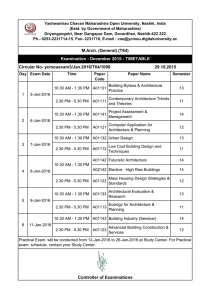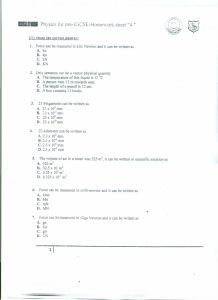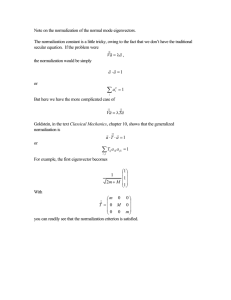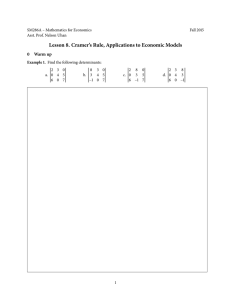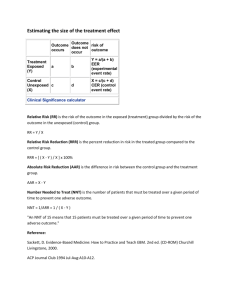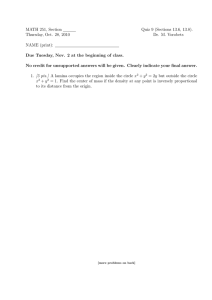Lesson 20. Review: Optimization of Functions with 1 or 2... Determinants 1 Optimization of a function of a single variable
advertisement
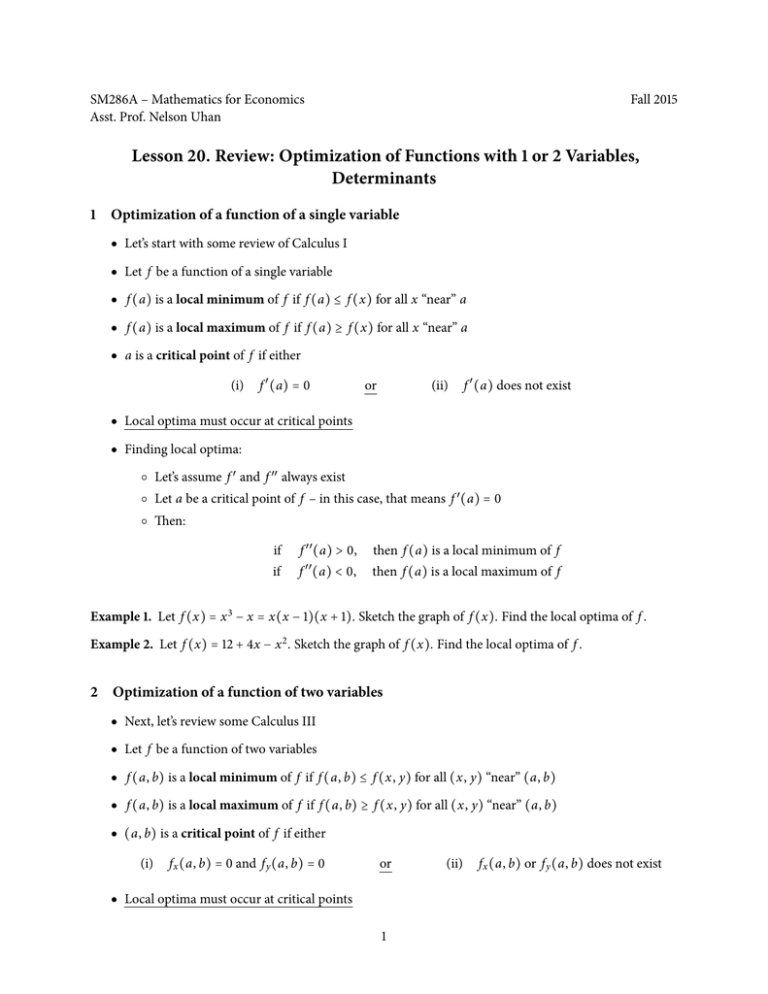
SM286A – Mathematics for Economics Asst. Prof. Nelson Uhan Fall 2015 Lesson 20. Review: Optimization of Functions with 1 or 2 Variables, Determinants 1 Optimization of a function of a single variable ● Let’s start with some review of Calculus I ● Let f be a function of a single variable ● f (a) is a local minimum of f if f (a) ≤ f (x) for all x “near” a ● f (a) is a local maximum of f if f (a) ≥ f (x) for all x “near” a ● a is a critical point of f if either (i) f ′ (a) = 0 or (ii) f ′ (a) does not exist ● Local optima must occur at critical points ● Finding local optima: ○ Let’s assume f ′ and f ′′ always exist ○ Let a be a critical point of f – in this case, that means f ′ (a) = 0 ○ Then: if f ′′ (a) > 0, then f (a) is a local minimum of f if f (a) < 0, then f (a) is a local maximum of f ′′ Example 1. Let f (x) = x 3 − x = x(x − 1)(x + 1). Sketch the graph of f (x). Find the local optima of f . Example 2. Let f (x) = 12 + 4x − x 2 . Sketch the graph of f (x). Find the local optima of f . 2 Optimization of a function of two variables ● Next, let’s review some Calculus III ● Let f be a function of two variables ● f (a, b) is a local minimum of f if f (a, b) ≤ f (x, y) for all (x, y) “near” (a, b) ● f (a, b) is a local maximum of f if f (a, b) ≥ f (x, y) for all (x, y) “near” (a, b) ● (a, b) is a critical point of f if either (i) f x (a, b) = 0 and f y (a, b) = 0 or ● Local optima must occur at critical points 1 (ii) f x (a, b) or f y (a, b) does not exist ● Finding local optima: ○ Let’s assume f x , f y , f xx , f y y , and f x y always exist ○ Let (a, b) be a critical point of f – in this case, that means f x (a, b) = 0 and f y (a, b) = 0 ○ Define D = f xx (a, b) f y y (a, b) − [ f x y (a, b)]2 ○ Then: if D>0 and f xx (a, b) > 0, then f (a, b) is a local minimum of f if D>0 and f xx (a, b) < 0, then f (a, b) is a local maximum of f if D < 0, then f (a, b) is a saddle point of f Example 3. Let f (x, y) = x 2 + y2 − 2x − 6y + 14. Find the local optima of f . Example 4. Let f (x, y) = x 3 − 12x y + 8y3 . Find the local optima of f . 3 Determinants ● Finally, let’s review Lesson 7 ● The determinant ∣A∣ of square matrix A is a uniquely defined scalar associated with A ● If A = [ a b ], then ∣A∣ = ad − bc c d ● For larger matrices, use Laplace expansion Example 5. Find the following determinants: 2 −1 ∣ ∣ 3 8 RRR0 −2 5RRR R RRR RRR4 1 3RRRRR R RRR RR 1 1 0RRRR RRR0 −2 5RRR R RRR RRR 1 1 0RRRRR R RRR RR4 1 3RRRR 2 RRR 1 0 −1 0RRRR RRR RRR 0 2 4 3RRRRR RR RRR RRRR 0 −1 2 5RRRRR RRR−2 1 0 3RRR
